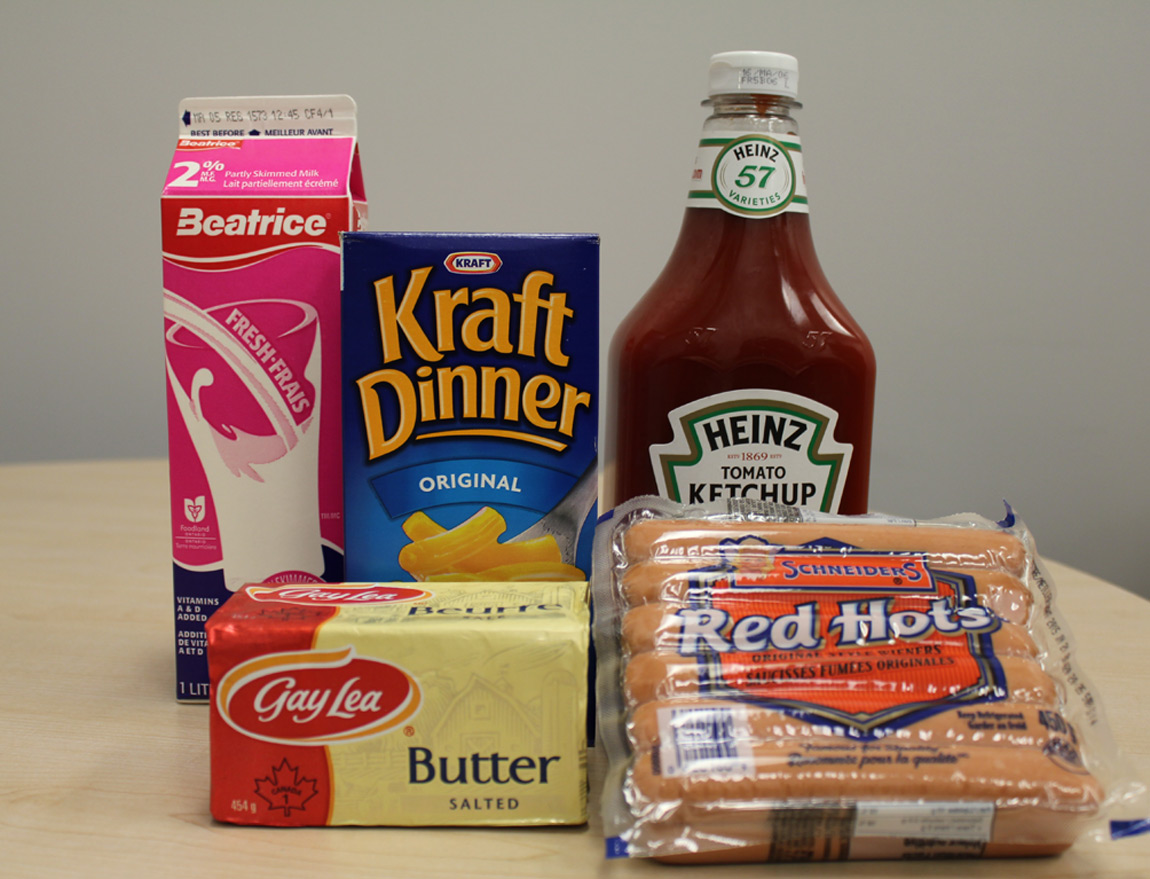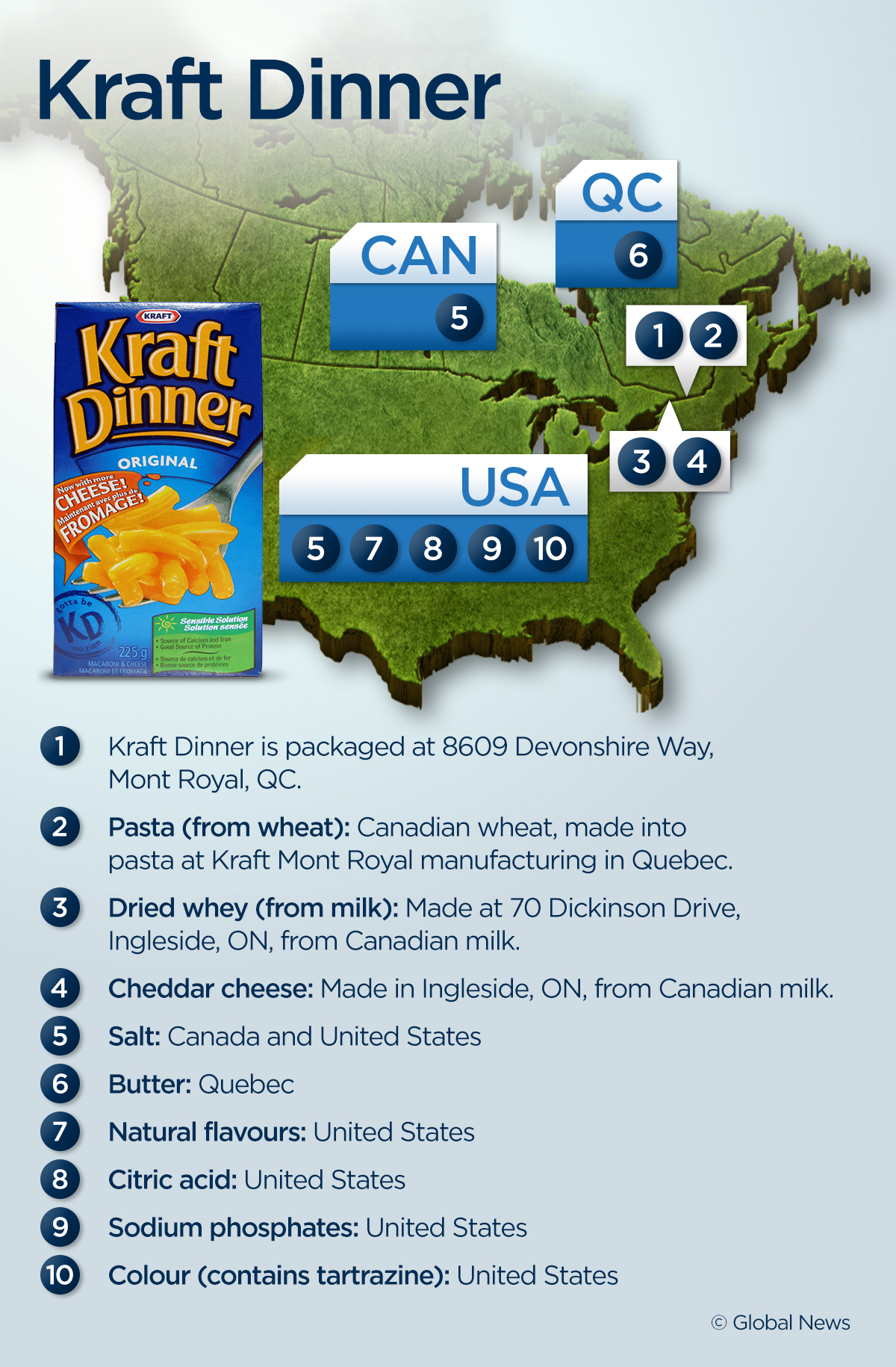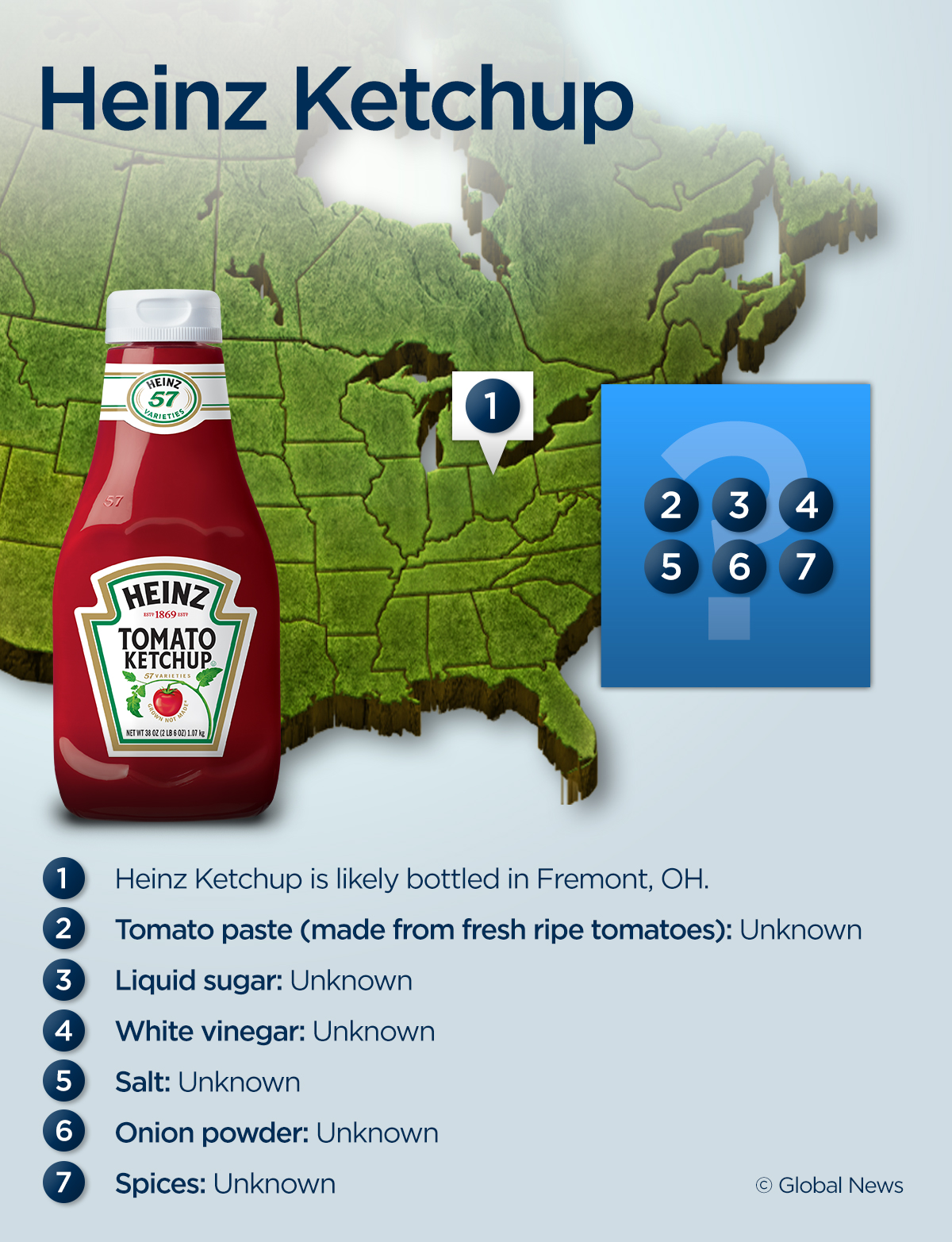WATCH ABOVE: Kraft Dinner, hot dogs and ketchup. Sounds pretty good, doesn’t it? Global News wanted to find out exactly what was in the Canadian staple and where all the ingredients came from. John Hadden explains the results.

Gooey cheese, salty hot dogs and a hit of sweet ketchup – is there any lunch more classically Canadian?
But does it actually come from Canada? We decided to find out.
The challenge: track down the origins of all the ingredients in a classic Canadian lunch of Kraft Dinner, hot dogs and a squirt of ketchup.
The first step was a trip to the grocery store. The Metro close to Global News’ Toronto office provided the supplies: Kraft Dinner (original flavour of course), Schneiders Red Hots hot dog wieners, Heinz ketchup, and to make the KD: Gay Lea butter and Beatrice 2% milk. Naturally, we were going with the classic KD recipe – no margarine or skim milk here.
After a month of phone calls, emails and Internet document searches trying to track the 33 ingredients that make up this meal, here’s what we found.
Kraft Dinner
Our box of Kraft Dinner was packaged in Mont Royal, Quebec, on the Island of Montreal. The macaroni was also made there, from Canadian wheat. The cheese ingredients (dried whey and cheddar cheese) were made by Kraft, from Canadian milk, at its plant in Ingleside, Ontario.
The salt comes from Canada and the United States – Kraft did not wish to be more specific – and the butter is from Quebec.
Then, things get interesting. Kraft Dinner, which already contains butter and cheese (and to which you add more butter) also contains “natural flavours” of butter and cheese. Both are from the United States. So are the citric acid, sodium phosphates and artificial colour.
Kraft did not wish to get more specific than “the United States” for these ingredients.
Schneiders Red Hots
A classic hot dog, these wieners are produced by Maple Leaf under the Schneiders brand.
The pork for the hot dogs comes from Manitoba. The pigs are slaughtered at the giant Maple Leaf Foods plant in Brandon, then the meat is shipped to Hamilton, Ontario, where it’s mixed with all the other ingredients and turned into wieners.
There are a lot of other ingredients. The modified corn starch, potassium lactate (a preservative and flavour enhancer) and sodium diacetate (a preservative and acid controller which is sometimes used to impart a salt and vinegar flavour) all come from the United States. Modified milk ingredients, salt and wheat flour come from Canada.
Maple Leaf declined to be more specific about the other ingredients’ origins. For example, they mentioned that sodium nitrite, a preservative and curing agent, comes from “Europe,” and the wieners’ sodium erythorbate (another preservative), garlic powder and smoke come from “Asia.” There are also unnamed spices in the hot dogs, which Maple Leaf says come from the various countries to which they are native.
Heinz Ketchup
Heinz refused to provide any details on the origins of its ingredients or its packaging process. Going by what’s on the bottle, the ketchup contains tomato paste, liquid sugar, white vinegar, salt, onion powder and spices.
Some Internet searching revealed a few websites and order forms which suggested that the location of the bottling plant could be discerned from the code printed on the bottle’s cap. In this case, our bottle’s code started with the letters “FR”, suggesting that the ketchup was bottled at Heinz’ plant in Fremont, Ohio. Heinz did not confirm whether this was the case.
Interestingly, Heinz has its own breeds of tomatoes, which it sells to growers who wish to grow tomatoes for ketchup and other processed products. The HeinzSeeds website claims that 30 per cent of the world’s processed tomatoes are grown from HeinzSeeds.
Beatrice 2% Milk
Beatrice milk, made by Parmalat, is one of the most local products in the Kraft Dinner meal. Because milk needs to be quickly transported and brought to store shelves, it generally comes from fairly close to where it gets packaged, according to the Dairy Farmers of Ontario.
This particular milk was packaged at Parmalat’s plant in Brampton, Ontario, just northwest of Toronto. The milk came from dairies in Southern Ontario. Sixty-five per cent of the milk packaged at the plant comes from over 100 km away – the farthest dairy it could have come from is outside of Windsor.
The milk, like all Canadian milk, is fortified with vitamins. The vitamin A palmitate and vitamin D3 both came from Western Europe. Parmalat declined to be more specific – other than to say they didn’t come from Spain or Italy.
Gay Lea butter
The butter is the most local product in this meal. Purchased in Toronto, the butter is made in Guelph, Ontario, from Ontario milk. Ninety-seven per cent of the milk that gets shipped to the Guelph plant comes from less than 100 km away.
This particular butter also has added salt – though Gay Lea provided no information on the salt’s origins. Since every ingredient in this meal except the milk already has lots of salt, we probably could have gone with unsalted butter.
Even though it’s a processed food with 33 ingredients from several countries on at least three continents, the meal was delicious: every 8 year old’s dream.
Graphics by Janet Cordahi, Global News













Comments